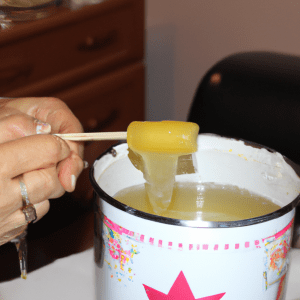
Hair removal is a beauty ritual that has been practiced for centuries by both men and women. Traditional methods of hair removal have often involved harsh chemicals or painful waxing, but there is a natural alternative that is both gentle and effective: sugar waxing. In this guide, we will teach you how to make your own sugar wax from scratch using natural ingredients. We’ll also cover the benefits of sugar waxing, tips for a successful waxing experience, and potential risks to keep in mind.
What is Sugar Waxing?
Sugar waxing, also known as sugaring, is a natural method of hair removal that uses a mixture of sugar, water, and lemon juice. The mixture is heated and then applied to the skin in the direction of hair growth. A strip of muslin cloth is then placed over the wax and quickly removed, pulling out the hair in the process. Sugar waxing can be done at home or by a professional esthetician.
Benefits of Sugar Waxing:
One of the main benefits of sugar waxing is that it is a completely natural way to remove hair. The ingredients used in sugar waxing are all natural and gentle on the skin. Sugar waxing is also less painful than traditional waxing methods, and it lasts longer too! Additionally, sugar waxing is environmentally friendly and cost-effective, making it a popular choice for those who want to reduce their impact on the planet.
Making Sugar Wax from Scratch:
Making sugar wax from scratch is a relatively simple process. The ingredients you will need include sugar, water, lemon juice, and cornstarch or arrowroot powder. Begin by combining the sugar, water, and lemon juice in a saucepan over medium heat. Stir the mixture until the sugar has dissolved, then continue to cook until the mixture becomes thick and syrupy. Remove the pan from the heat and allow it to cool slightly before stirring in the cornstarch or arrowroot powder to thicken the wax.
Tips for a Successful Sugar Waxing Experience:
To ensure a successful sugar waxing experience, there are a few things to keep in mind. First, make sure your skin is clean and dry before beginning. This will help the wax adhere better to your skin. Second, heat the sugar wax in the microwave for a few seconds to make it more pliable. Third, apply the wax in the direction of hair growth and remove it in the opposite direction. Fourth, use a post-waxing serum or lotion to soothe the skin. Finally, avoid hot showers or baths and rigorous exercise for 24 hours after waxing.
Risks and Precautions:
While sugar waxing is generally considered safe, there are some potential risks to be aware of. First, the wax can be very hot, so be careful when handling it. Second, be sure to test the wax on a small patch of skin before using it on larger areas to avoid an allergic reaction. Third, if you have sensitive skin or are prone to ingrown hairs, you may want to consider using a different hair removal method. Finally, if you have a medical condition or are taking medications that affect your skin, it’s always best to check with your doctor before trying a new beauty routine.
Conclusion:
Sugar waxing is a natural and effective method of hair removal that is both gentle on the skin and cost-effective. By making your own sugar wax from scratch, you can reduce your environmental impact and avoid harsh chemicals found in commercial hair removal products. With the right precautions and techniques, sugar waxing can be a safe and enjoyable way to maintain smooth, hair-free skin.

